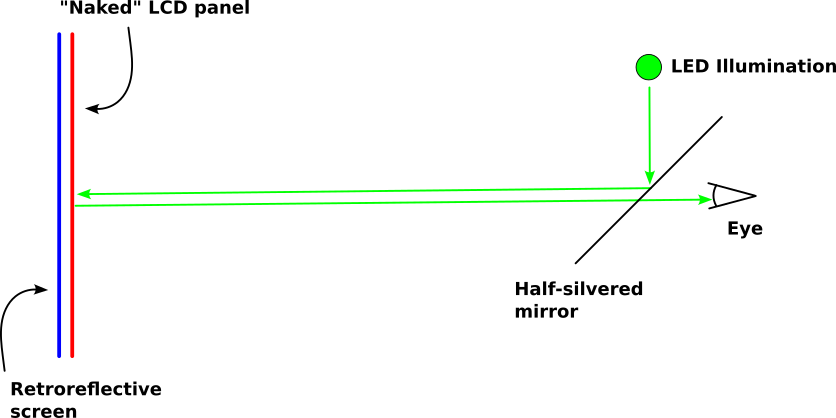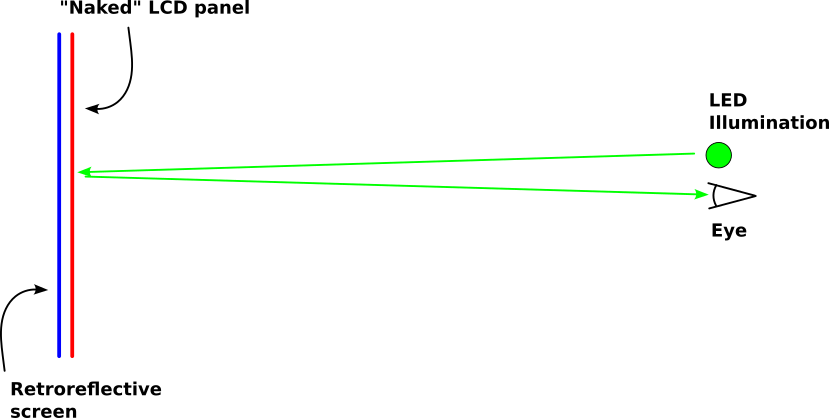
A possibly novel type of 3D display with holographic light-field properties. The display is composed of a retro-reflective screen with a transparent LCD panel in front that serving a single observer who wears special glasses. These glasses don't have any lenses, instead they are standard LCD shutters to split the screen frame rate between the left and right eye. The glasses also hold a bright white LED, which is the source of illumination of the screen. The illumination starts at the glasses, reflects from the retro-reflective screen, gets filtered by the LCD and finally hits the viewer's eyes. This geometry makes it so that the color and intensity of rays coming into the eye can be directly controlled by the pixels of the LCD panel. Thus forming a light-field display. The final necessary component of the system, to be able to render scenes correctly, is a way to track the relative position of the glasses to the screen. This could be accomplished with a camera fixed to the screen looking in the direction of the glasses.
Key advantages:
20/Jul/2023
Similar to the system Tilt Five uses, but instead of having pico-projectors on the glasses:
The glasses position needs to be tracked and conveyed to the computer generating the image in the LCD color display. Use a camera mounted to the screen and track markers (or active LED beacons) on the glasses.
The glasses can be lightweight and wireless (battery powered), they only need to receive frame-rate sync information for the LCD shutters. The glasses don't send any data out to the rest of the system. They also don't perform any complicated graphics processing (no GPU). They also don't have any lens optics which would add to the weight. Additionally the lack of lens optics also allows an unrestricted field of view of the system Additionally the lack of lens optics on the glasses allows a display with an unrestricted field of view.
Diagram of the display system described:

Assuming that the distance from the eye to the screen is large enough, it's possible that the light angles are approximately the same if we do away with the half-silvered mirror and instead use LED illumination that is coming from close to the eye position. This would simplify the system, remove glass from in front of the eye, and make the image brighter.

05/Aug/2023
The display proposed above could be implemented relatively cheaply by using a standard 3D TV (or 3D PC monitor) with active LCD shutter glasses, by doing these modifications:
06/Aug/2023
The same principles discussed above should also work for a head-mounted display, like the current VR googles ones. The illumination would have to use a half-reflective mirror and come from the vertical direction on top of the eye.
The display screen could be curved to better cover the degrees of vision of the eye side to side. When coming to the nose position the displays from each eye would be curved and come to a point similar to the top of a heart shape. To account for the eye moving from the center position, eye tracking and multiple illumination LEDs could be used, activating a single light at the time according to the position of the eye. A single horizontal group of LEDs is likely enough to cover all relevant positions of the eye. The system is solid-state which is much better than having mechanical moving parts.
An advantage of the head-mounted display is that external light is blocked, which could be a drawback of the external large screen set up described previously.
The head-mounted display requires tracking of the position of the head in relation to the room, to be able to render scenes correctly. There are standard approaches in which this is already done for VR display in the market.